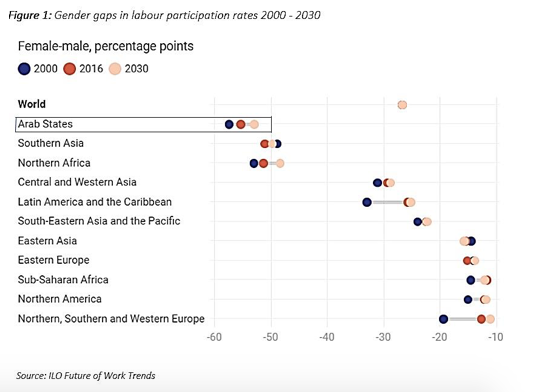The Future Of Work: A Case For Women Pursuing STEM – OpEd
‘Work for a brighter future’
The future of work is changing at a rapid pace with developments in societies and technologies. With transformation of how people work (accentuated by the pandemic), what skills are required to fulfil a task and time consumed by a job. These changes call for a major reset in employee training, school education and vocational coaching. But when we look deeper into how the future of work will play out it seems there is not only a technological aspect but also an aspect that emerges from societal norms.
The International Labour Organisation released a report titled ‘Work for a brighter future’ by the Global Commission on the Future of Work which was chaired by Matamela Cyril Ramaphosa, President of the Republic of South Africa and Stefan Löfven, Prime Minister of Sweden. The report exhibited the outlook and perspective required to answer the question what is the future of work? From a gendered lens, they vouched for a ‘transformative and measurable agenda for gender equality’. In an era governed by tech advances mixed with unequal access to opportunities for women topped with the incoming shifts, does not seem to paint a sunny picture.
In middle and low-income countries, women have limited career options. The case of India is similar where the education of girls and women is disregarded due to deep-rooted patriarchy and social norms. This leads to their lack of representation in various sectors but nowhere is it starker than in STEM careers. Indian females make up 48.02 % of the population (as of 2018) but according to the United Nations, women constitute merely 14% of the total 280,000 scientists, engineers and technologists in research development institutions in India. These numbers display the gender gap in STEM. What is problematic is that with the change in nature of work where STEM skills, training and careers are salient, it appears that a more severe setback for women in the workforce is eminent, but on the brighter side it is not inevitable.
The emergence and intake of Artificial Intelligence (AI) and Automation puts a lot of jobs at risk but at the same time gives birth to a whole range of never thought of before vocations. But these new opportunities will be difficult to seize by women due to a gap in skills.
Upskilling and new age training are need of the hour. This reality highlights the fact that decisive actions need to be adopted. True there are other issues of improving the standards of work-life, expansion of choices but closing the skill gap in STEM is a prerequisite for the achievement of equality in all the above-mentioned spheres. Failure on the part of the administrative and legislative leadership to not bridge these differences will only increase the chasm of representation and equality in the STEM job sector. Thus, a lot of people who cannot adapt to these transitions will be unemployed. Skills in all sectors will become obsolete and especially so for women who were lacking skills in the first place.
Multidimensional Problem
Changing demographics of countries, with dwindling population due to decreasing growth rate, places novel pressures on the markets. There is a need for making jobs sustainable, with countries attempting to form green economies. This will create more jobs but they will not be accessible for those with STEM skills. New facets of labour market create doubts over the inclusiveness and representation for women remains a utopia.
Gender equality in education is an economic and social overarching responsibility of the policymakers. The structural barriers women face in pursuing STEM education and later careers in the field needs to be demolished. The inclusion of women doesn’t only stop access to opportunities but also bring about a measurable plan for equality at the workplace by ensuring strengthening women’s voice, eradicating violence and harassment at work and executing pay transparency policies. Specific measures are also needed to address gender equality in the technology-enabled jobs of tomorrow.
Conclusion
Thus, women must be active participants in decision making that will ensure their fair representation not only as policymakers but also in all other sectors. Governments, employers, workers’ organizations and employers’ organizations actively pursue and support greater representation by women. Technology can play a powerful role in achieving gender equality by the adoption of specific measures to ensure equal opportunity and equal treatment of women in the technology-enabled jobs of the future.
Source:
Global Commission on the Future of Work. Work for a brighter future. Geneva: International Labour Organisation, 2019. https://www.ilo.org/wcmsp5/groups/public/—dgreports/—cabinet/documents/publication/wcms_662410.pdf.


